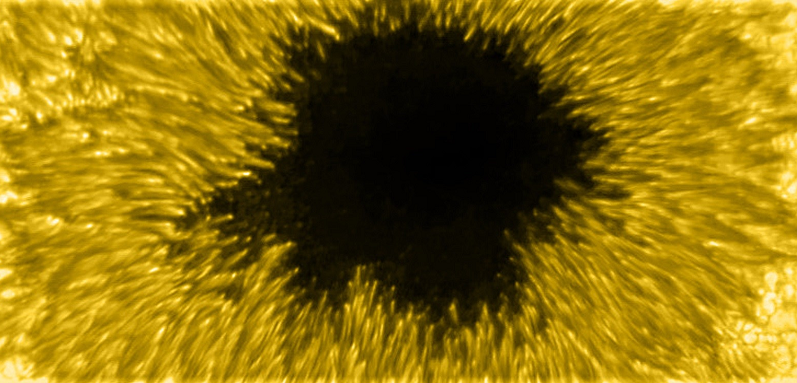
Data Products
IBIS-A currently comprehends 30 TB of data taken with IBIS during 28 observing campaigns performed in 2008 and from 2012 to 2019 on 159 days. IBIS-A contains raw, calibrated, and science-ready data, as well as contextual observations.
The data products include:
Level 0 : Raw data
Level 1 : Calibrated and compensated series of Fe I 6302 A, Fe I 6173 A, Ha 6563 A, FeI 7090, Ca II 8542 A data
Level 1.5 : Polarization maps and velocity pattern of Fe I 6173 A and Ca II 8542 A series
Level 2 : Inversion of Fe I 6173 A series
About 30% of the observations are released as Level 1 data calibrated for instrumental response and compensated for residual seeing degradation, while 10% of these data is also available as Level 1.5 format as multi-dimensional arrays of circular, linear, and net circular polarization maps, and line-of-sight velocity patterns. 81% of the photospheric calibrated series present Level 2 data with the view of the magnetic and velocity fields in the targets, as derived from Milne-Eddington inversion of the data with the Very Fast Inversion of the Stokes Vector (VFISV, Borrero et al. 2011) code. Further information on IBIS-A data is available here.)
Metadata and movies of each calibrated and science-ready series are also available to
ease users for evaluating observing conditions. Browsing IBIS-A does not require authentication, but users have to register and login in order to be able to request and download IBIS-A data.
The interface permits searching data according to various criteria: solar target, disc position, observational mode, data range; criteria can be combined in order to refine searches.

IBIS-A is currently maintained by the H2020 SOLARNET High-resolution Solar Physics
Network project. Any publication that uses data contained in IBIS-A should acknowledge the above support by reporting “This study makes use of data collected inthe IBIS-A archive, which has received funding from the Euro-pean Union’s Horizon 2020 research and innovation programmeunder Grant Agreements No 824135 (SOLARNET).”
Legend:
Target: solar disc feature
Spect: observing mode (spectoscopic or spectro-polarimetric)
μ: cosine of the heliocentric angle
Δμ: range of mu

A sharp view of the Sun obtained with the IBIS at the NSO/Dunn Solar Telescope (New Mexico, USA).The image shows remarkable details of the large sunspot seen in AR NOAA 12546 near the central meridian [S07W07]. Observer: Marco Stangalini (INAF) et al. Image processing: Fabrizio Giorgi (INAF) Wavelength: Fe I 617.3 nm line (continuum) Date: 20 May 2016, 13:53 UT
